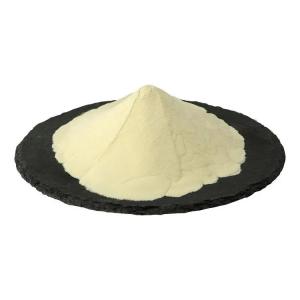Phosphatidyl serine is used in rice-based snacks.
Time:2025-08-12Phosphatidylserine (PS) is a naturally occurring phospholipid found in high concentrations in the membranes of cells, particularly in the brain. It plays a vital role in maintaining cell membrane integrity and facilitating cellular communication. In recent years, phosphatidylserine has gained attention in the food industry as an ingredient incorporated into various functional and nutritious food products, including rice-based snacks.
What is Phosphatidylserine?
Phosphatidylserine is classified as a phospholipid, a compound consisting of fatty acids, a glycerol backbone, a phosphate group, and the amino acid serine. Its unique molecular structure enables it to integrate into cell membranes, influencing membrane fluidity and signaling pathways.
Although PS is present in many natural foods such as soy lecithin, egg yolks, and certain fish, its purified forms are increasingly utilized in food formulations to enhance texture, stability, and nutritional profiles.
Application of Phosphatidylserine in Rice-Based Snacks
Rice-based snacks are popular worldwide due to their light texture, digestibility, and gluten-free nature. Incorporating phosphatidylserine into rice snacks offers multiple functional advantages:
Improved Emulsification and Texture
Phosphatidylserine acts as a natural emulsifier, helping to blend fats and water components evenly. In rice snacks, which often include oil or fat phases, PS helps create a uniform texture and prevents separation. This contributes to a crisp yet tender bite characteristic.
Enhanced Shelf Stability
Phospholipids like PS can help protect rice-based snacks from oxidative degradation by stabilizing fat molecules. This results in extended shelf life and maintains product freshness over time.
Moisture Retention and Crispiness
The amphiphilic nature of phosphatidylserine aids in balancing moisture content within rice snacks. This property helps preserve crispiness without causing excessive dryness or sogginess.
Nutritional Enrichment
Though primarily valued for its functional properties in food processing, phosphatidylserine also contributes minor amounts of essential fatty acids and phospholipids, which play a role in cellular health.
Forms and Dosage
Phosphatidylserine used in rice-based snacks is typically derived from soy lecithin or sunflower lecithin through purification processes. It is available as a powder or liquid concentrate, facilitating easy incorporation during the mixing or extrusion stages of rice snack production.
The optimal dosage depends on the product formulation and desired texture but generally ranges from 0.1% to 1.0% by weight.
Processing Considerations
When using phosphatidylserine in rice snack manufacturing, certain processing factors are important:
Temperature Stability: PS is relatively stable under typical baking or extrusion temperatures but prolonged exposure to excessive heat should be avoided to maintain functional integrity.
Compatibility: PS blends well with other emulsifiers and stabilizers commonly used in rice snacks.
Mixing: Uniform dispersion of phosphatidylserine in the rice matrix is essential for consistent product quality.
Regulatory and Safety Status
Phosphatidylserine is recognized as safe for food use in many countries. It is generally included under lecithin-related food additives and does not pose known safety risks when used within recommended levels.
Summary
Phosphatidylserine serves as a multifunctional ingredient in rice-based snacks, enhancing texture, stability, and shelf life while contributing to the product's nutritional value. Its emulsifying properties improve the uniformity and sensory qualities of rice snacks, making it a valuable component in modern snack food formulations.


 CN
CN





